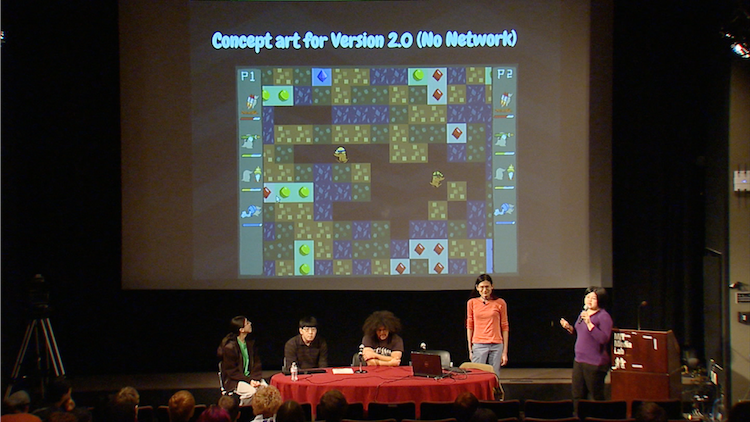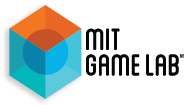Final Presentations from “Creating Videogames” – Fall 2012

This Fall, the MIT Game Lab taught its digital game creation course, Creating Video Games, for the third time. The goal of the course is less about ‘creating video games’, and more about learning the project management, team co-ordination, and engineering structure that it takes to support a creative team project.
Students worked in teams, varying in size from 2 to 5 people, on a total of four projects, learning the basics of working as a team on a complicated creative project. During the three two-week projects, we emphasized design iteration through rapid prototyping and directed focus testing, as well as agile project management techniques. For the two digital prototypes, we also taught and emphasized good coding practices. After cramming three separate small game projects into the first half of the semester, we gave the students the remaining time to work on their final project.
We required the students to form larger teams for the final projects, with a minimum team size of five. Teams were self organizing: we gave the students in class time to review all of the projects that had been done up to that point, and to choose any one of them to serve as the prototype for their final project. Different students evangelized for different projects; eventually, four teams formed, each working with a different prototype as their starting point.
From the starting project on, we required the players to make two person games, running on a single device. For the final project, our added requirement was to make a two person game that was entertaining to watch for a group of spectators as well as entertaining to play for the two players in the game.
Just as we required them to form their own teams, we also expected them to organize themselves. Team sizes ranged from six people to nine, and the rest of the class time was spent determining team structure, who would fill which roles, how the team would run its project management process, and which tools the team would use.
All teams had at least one member who had worked on the previous prototype, so they had access to the previous projects’s code. Some teams chose to start from scratch, reworking and revisiting the original prototype’s core ideas; others used the original code base, but took time to fix the inevitable coding errors left by the earlier project’s short timescale. In the end, we had four successful games: Gaveldor 2: The Engaveling of Ambidexteria, Psycho Bunnies, Magic Mecha Bear Puncher 9000, and Mouse vs. Mole. Rather than describe them here, you can watch the presentation video!
